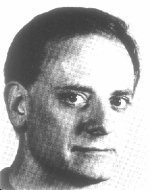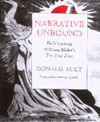 Donald Ault received his Ph.D. from the University of Chicago and in 1968 served on the faculty of the University of California, Berkeley, where he was Associate Editor of The Blake Newsletter. Since it appeared in 1974, his Visionary Physics: Blake’s Response to Newton has been the major study of Blake’s attack on the scientific world-view. Prof. Ault is co-editor of Critical Paths: Blake and the Argument of Method (Duke University Press) and has been scholarly advisor and contributor to the five-year, thirty volume publishing project, The Carl Barks Library of Walt Disney’s Donald Duck and Uncle Scrooge.
Donald Ault received his Ph.D. from the University of Chicago and in 1968 served on the faculty of the University of California, Berkeley, where he was Associate Editor of The Blake Newsletter. Since it appeared in 1974, his Visionary Physics: Blake’s Response to Newton has been the major study of Blake’s attack on the scientific world-view. Prof. Ault is co-editor of Critical Paths: Blake and the Argument of Method (Duke University Press) and has been scholarly advisor and contributor to the five-year, thirty volume publishing project, The Carl Barks Library of Walt Disney’s Donald Duck and Uncle Scrooge.
Ault’s interests are wide and include everything from Romantic poetry to Psychophysics, Holography, Psychoanalysis, Deconstruction, Typography, Mathematical notation, and the history of Animation. At Berkeley in 1972-74, he instituted curriculum changes by creating English 176 (“Literature and Popular Culture”) and English 177 (“Literature and Philosophy”). Ault’s first book Visionary Physics: Blake’s Response to Newton, an extended version of his dissertation, dealt with the complex relationship between Blake and Newton. The book won wide acclaim among Blake critics, and quickly became a foundational book in the field. He also published the most exhaustive book on Blake’s visionary poem “Vala” called Narrative Unbound: Re-Visioning William Blake’s The Four Zoas. After reading Narrative Unbound, Jerome McGann called Ault “probably the most innovative Blake critic in the country” Ault has published numerous articles on William Blake, including the notable “Where’s Poppa? or, The Defeminization of Blake’s Little Black Boy.” which utilized “anomalous textual details” and turned attention away from the obvious racial issues present in the poem focusing on the more subtle politics of gender difference. He ends the essay with the note that, in a dream, he “showed this manuscript to Blake, who told me that he was ‘not uncomfortable’ with my reading of ‘The Little Black Boy.’”[3] While such comments have alienated some members of the Blake studies community, they are part and parcel of his criticism which highlights the textual minutae, visionary complexity, and visual oddity of Blake’s work.

